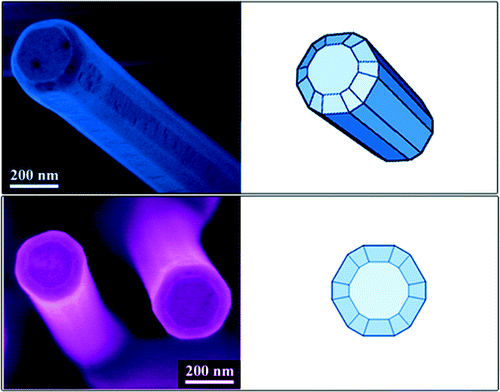成果图片
10. We report a novel electrode of 3D hierarchical Co3O4@NiMoO4 flower-like hybrid arrays synthesized with the combination of hydrothermal and post-annealing treatment. The Co3O4 nanowire arrays are utilized as scaffolds and interconnected NiMoO4 nanosheets are grown on the surface. The assembled hybrid supercapacitor device based on Co3O4@NiMoO4 and AC as the positive and negative electrodes can achieve a high energy density of 58.5 Wh/kg at 389 W/kg, suggesting the great potential for applications in supercapacitors.
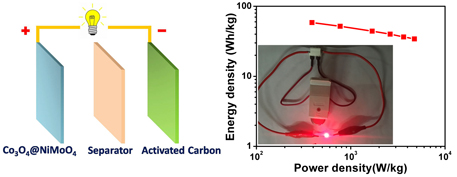
9. This review is specifically focused on the recent progress in enhancing the LIBs performance of TiO2 based materials with various synthetic strategies and architecture control, including designing hollow structure to generate more open channels and active sites for Li-ion transport, coating or combining TiO2 with metal to improve its electronic conductivity, or incorporating carbonaceous materials such as activated carbon, CNTs, or graphene to enhance the capacity and cycling stability.
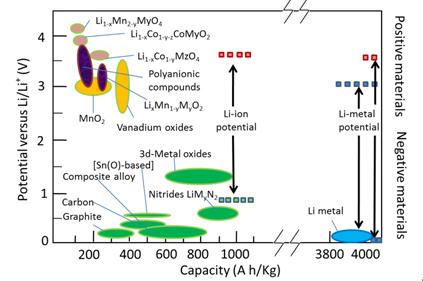
8. A novel electrode of three-dimensional (3D) hierarchical NiCo2S4@Ni(OH)2 core-shell hybrid nanosheet arrays was fabricated for supercapacitors. The HSC device based on the above materials exhibits high energy density (53.3 Wh/kg at 290 W/kg), high power density (6420 W/kg at 32.1 Wh/kg), as well as excellent cycling stability (98.8% over 2000 cycles at 20 mA/cm2), suggesting the great potential of this hybrid nanostructure as promising electrode materials for high-performance supercapacitors.
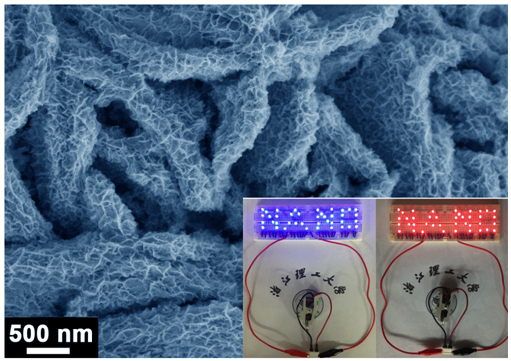
7. A simple two-step method is reported for the synthesis of ternary Ni-Mo oxide. The 3D interconnected networks of Ni-Mo oxide nanosheets are gown on Ni foam. The ultrathin and mesoporous features are revealed by HRTEM and STEM. The nanosheets are tested as supercapacitor electrodes with enhanced properties.
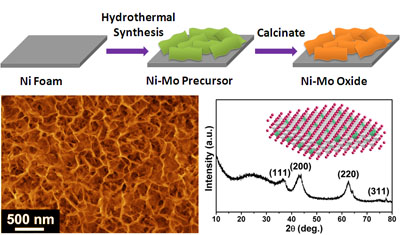
6. Hierarchical NiCo2O4@NiMoO4 core-shell nanowire/nanosheet arrays were successfully fabricated and assembled in an asymmetric supercapacitor device with outstanding electrochemical performance.
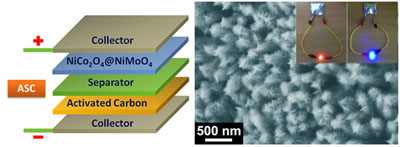
5. We report a novel hierarchical Ag3PO4/TiO2 nanofiber heterostructure. The heterostructure was prepared by electrospinning and solution processes.The resulting hybrid exhibited enhanced visible light photocatalytic activities. The hybrid system enabled full utilization of solar light and less consumption of Ag. This approach is general for the design and construction of hybrid photocatalysts.
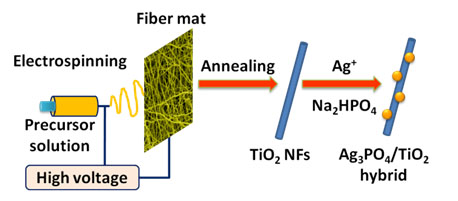
4. Here we report a facile and green synthetic approach for high-quality colloidal Mn doped ZnO NCs with simultaneous control over composition, shape and optical properties. Specifically, the shape of doped ZnO NCs can be finely modulated from three dimensional (3D) tetrapods to 0D spherical nanoparticles in a single reaction scheme. The growth mechanism of doped ZnO NCs with interesting shape transition is explored.
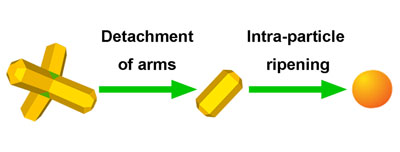
3. Here we show that in addition to altering the atomic composition of the nanocrystals the introduction of specific dopants can also lead to dramatic changes in morphology. The creation of Mg-doped ZnO nanocrystals provides an excellent example of this procedure; depending on the molar ratio of dopant precursor in the reagents, doped nanocrystals with well-defined shapes, from tetrapods to ultrathin nanowires, which exhibit tunable optoelectronic properties, are obtained for the first time.
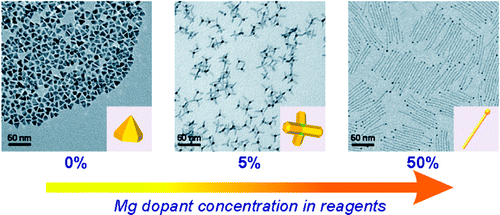
2. High quality ultrathin CeO2 nanorods were synthesized through an oriented attachment process followed by ripening.
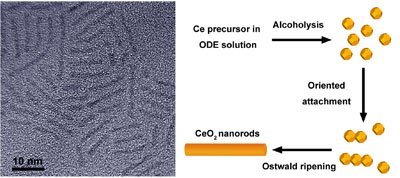

1. Quasi-aligned (Zn,Cd)O nanorods with highly faceted morphology were synthesized by a simple catalyst-free thermal evaporation method. The crystal structure and optical properties of the as-synthesized nanorods were thoroughly investigated. The results indicate that the (Zn,Cd)O nanorods are single crystals of wurtzite structure, having 12 side planes, namely, {011̅0} and {112̅0} planes. The presence of Cd is essential for obtaining these highly faceted nanorods.
